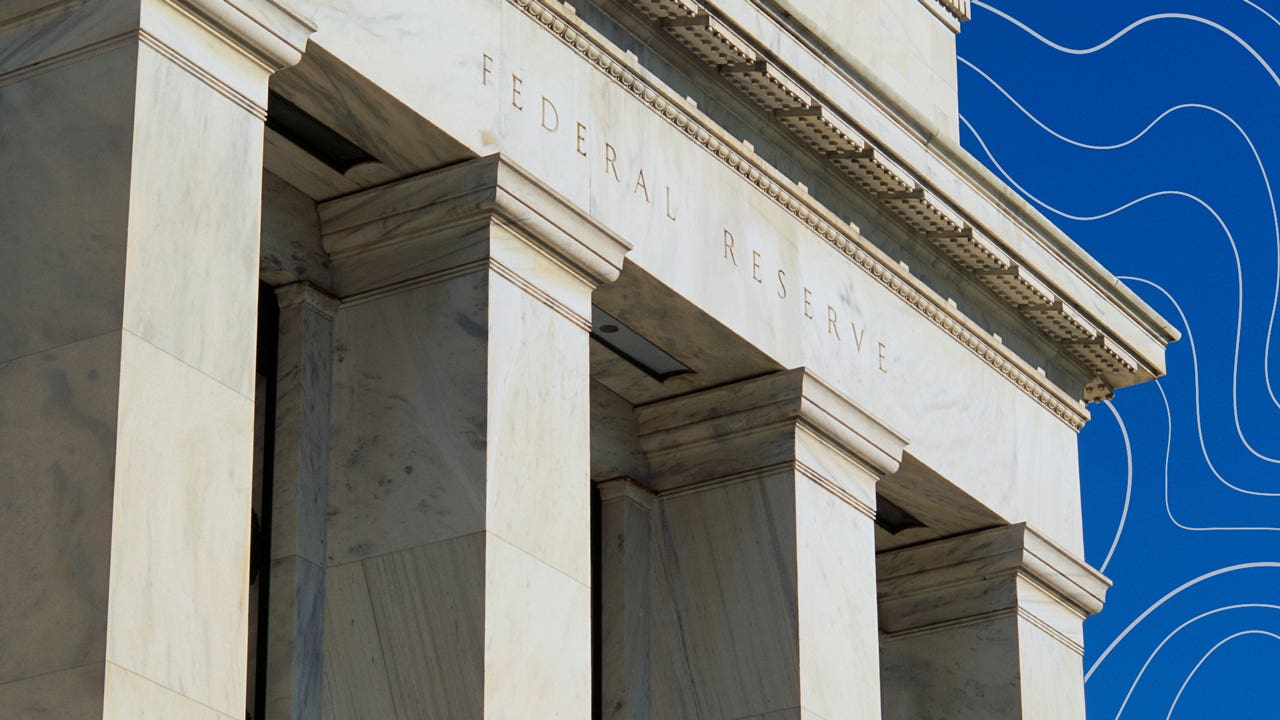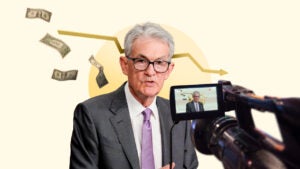Fed rate cheat sheet: What all those terms really mean



With the recent interest rate hikes and rumblings about inflation, you’ve probably been hearing a lot about the Federal Reserve — and all the jargon that comes with it.
The Federal Reserve’s monetary policy decisions affect consumers and businesses. The U.S. central bank’s actions impact the interest rates you pay on your home mortgage, credit card debt and other loans. Considering the effect the Federal Reserve’s stance has on the economy, its stand on interest rates tend to make headlines.
In case you have ever wondered what the Fed’s target interest rate is, or what a basis point is, here’s a breakdown of some of the Fed-related jargon that gets tossed around.
Monetary policy
Monetary policy refers to the course that central banks set to steer a country’s economy. The Federal Reserve sets monetary policy for the U.S. economy. This policy, by guiding interest rates, aims to influence the cost of borrowing money for consumers and businesses. The Fed’s goal is to provide price stability in the economy, while making for maximum employment.
The tools the Fed uses to implement monetary policy include:
- Open market operations: whereby the Fed buys and sells securities
- Discount rate: the rate at which the Federal Reserve lends money to commercial banks and other depositary institutions
- Reserve requirements: what portion of their deposits and other liabilities banks have to store with the Federal Reserve system
Federal Reserve Board of Governors
The Fed’s Board of Governors oversees the Federal Reserve system — which includes the Federal Reserve as well as 12 regional Federal Reserve banks in Boston, New York, Philadelphia, Cleveland, Richmond, Atlanta, Chicago, St. Louis, Minneapolis, Kansas City, Dallas and San Francisco — to ensure that it meets its goals.
The board consists of seven members, nominated by the president and confirmed by the Senate. Each of these members serves a 14-year term. Two of these board members serve four-year terms as chair and vice-chair of the board.
FOMC
The Federal Open Market Committee is the Federal Reserve body that sets a goal for interest rates. The body has 12 members. They include the seven members of the Fed’s board of governors and five of the presidents of the 12 regional Fed banks. The president of the Federal Reserve Bank of New York always has a seat on the FOMC, while the remaining four seats rotate among the presidents of the 11 remaining regional Federal Reserve banks who take turns on the FOMC.
While presidents of the seven regional Federal Reserve banks that are not on the FOMC board at the time can’t vote on monetary policy decisions, they do participate in the FOMC meetings and provide input about the state of the economy.
The FOMC meets eight times a year and discusses the current economic conditions. The body then sets an appropriate interest rate target for the U.S. economy. The FOMC’s deliberations are of great interest to markets and investors. Its decisions influence interest rates and the prices of financial assets, such as stocks and bonds, besides having a ripple effect through the economy. At four of its meetings, Fed members provide a forecast for their outlook for certain economic variables, including their projections for interest rates (sometimes called a “dot plot”).
Hawks and doves
Fed policymakers could be referred to as “hawks” or “doves.” The hawks tend to be more focused on fighting inflation and leaning towards higher interest rates, whereas the doves tend to favor an easier monetary policy.
Target interest rate
The Fed targets a specific federal funds rate and then acts to achieve its goal. The federal funds rate is the rate at which banks and other depositary institutions lend money to each other on a short-term basis. When this rate is higher, banks find it more expensive to borrow — and when it’s lower, banks can borrow at a lower cost.
The Fed influences the cost of financing to achieve its target fed funds rate. It can buy and sell securities in the open market, set the rates at which banks borrow from the Federal Reserve system and change its reserve requirements. These actions influence depositary institutions’ cost of funds and the rate at which they lend.
Policy tightening
When the Fed wants to move interest rates higher, so the cost of borrowing goes up and the economy cools down, this is known as policy tightening. For instance, in what is also known as quantitative tightening, the Fed could sell securities in the market and suck up money from the economy. It could also hike up its discount rate and reserve requirements for banks. To combat inflation following the pandemic, the Fed has been engaged in policy tightening.
Policy easing
The Fed is said to be easing policy when it wants to stimulate the economy by moving interest rates lower, so that money is more readily available to banks and the cost of borrowing goes down. Consumers would then find it less expensive to, for example, buy a home. Businesses would also get financing on easier terms.
To achieve this goal, the central bank could buy securities from the market, thereby flooding it with money. To fight the fallout from late-2000s housing market meltdown and the financial crisis, for example, the Fed engaged in such quantitative easing. It could lower its discount rate and reserve requirements too.
Neutral interest rate
The neutral interest rate is a theoretical interest rate that neither stimulates nor restricts economic growth. At this neutral rate, an economy performs at its potential in a stable price environment (one that’s not inflationary or disinflationary). At rates above the neutral rate, economic growth would be restricted, and rates below the neutral rate would provide stimulus.
This neutral rate varies over time and across economies. For the U.S., economists see a rate of about 2.5 percent as being neutral (as of mid-2022). When the Fed sets its target interest rate above this neutral rate, the impact would be dampening to economic growth.
Prime rate
The prime is a rate at which banks lend to their creditworthy customers. Each bank sets its own prime rate. The Wall Street Journal does a survey of various banks’ prime rates to come up with its WSJ prime rate.
Banks add a margin to the fed funds rate to come up with their prime rate, and the latter moves in concert with the fed funds rate. Variable rates on various loans such as credit card loans and home equity lines of credit are based off the prime rate, with banks adding a margin to the prime rate to determine your interest rate.
Inflation rate
Inflation measures the change in prices of goods and services over a period of time. It tends to be calculated over the year and over the month. Core inflation is inflation that excludes food and energy prices, which tend to fluctuate more than other prices. Inflation including food and energy prices is so-called “headline inflation.” With the Fed aiming for price stability, it targets a long-term inflation rate of 2 percent.
PCE index
The Personal Consumption Expenditures index, or PCE index, measures how much consumers in the U.S. pay for various goods and services. This index is put out monthly by the Bureau of Economic Analysis and is an inflation gauge the Fed follows in setting its monetary policy. The Consumer Price Index, put out by the Bureau of Labor Statistics, is also an inflation gauge. The two indexes measure inflation differently and don’t tend to show the same rate of inflation.
Unemployment rate
Another Fed goal is to maximize employment in the U.S economy, enabling working-age adults who want a job to get one. The unemployment rate is one statistic that offers a take on the state of the employment market. It is a percentage measure of the number of adults who are unemployed and actively looking for work as a proportion of the total labor force. A lower unemployment rate is more favorable from the Fed’s perspective of maximizing employment.
Fed meeting minutes
Considering the impact of the Fed’s monetary policy decisions, investors and financial institutions are interested in the deliberations that led to the FOMC decisions. In a bid to be transparent, three weeks after each FOMC decision-making meeting the Fed releases the minutes of the meeting.
Basis points
One hundred basis points equals one percentage point. In other words, one basis point is one-hundredth of one percent. Some reports of the Fed’s interest rate moves are in basis points. For instance, if the Fed is said to raise its target interest rate 25 to 50 basis points, that would be a 0.25 percent to 0.5 percent rate hike.
Beige book
The Beige Book is a report the Fed publishes eight times a year. It is a summary of economic conditions in the U.S., based on input from the 12 regional Federal Reserve banks. Each Federal Reserve bank reports on conditions in its district based on interviews with different sources. The report provides an overall summary for the U.S. economy and then input on conditions in each Federal Reserve district.
Why we ask for feedback Your feedback helps us improve our content and services. It takes less than a minute to complete.
Your responses are anonymous and will only be used for improving our website.



